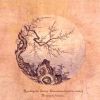 Most viewed Most viewed |

Episode_02.flvVidhura-Pandita Jataka: Episode 2 Series 31242 viewsVidhura-Pandita, the eloquent Sage
At one time , thousands of years ago, the Bodhisatta came to earth in the person of a sage named Vidhura-Pandita. He was no ordinary man of wisdom. His life's purpose was to speak the truth, and in such a way that men would be held spellbound by his voice.
|
|

IMG0053.jpgGesshin Prabhasa Dharma Roshi (left) Berlin 19921238 viewsSangha - Monks and Nuns in the Buddhist Community
|
|

heart_two.mp3The "Perfection of Wisdom" (Part Two)1235 viewsThe "Perfection of Wisdom" (Part Two)
|
|

9.jpg9. Ten Oxherding Picture1234 viewsRETURNING TO THE SOURCE
|
|

03__Eight_Great_Places_Part_3.pdfThe Eight Great Places of Buddhist Pilgrimage 031230 views3. PDF: As more and more Buddhists begin to realize the importance of performing a pilgrimage following the Buddha’s exhortation, the need for a simple guidebook becomes evident. The basic four pilgrimage sites (Lumbini, Bodhgaya, Sarnath and Kushinagar) were increased in terms of the great events of the Buddha’s life to eight by adding four more places considered to be the scenes of four principal miracles that he performed, namely: (i) The twin Miracle in Sravasti, (ii) Descent from Heaven in Sankasia (iii) Taming of the drunken elephant, Nalagiri in Rajgir and (iv) Offering of honey by a monkey in Vaishali.
|
|

M13_Buddha1.mp3The Buddha (Part 1)1221 viewsCollection of Dhamma Talks in America: The Buddha (Part 1) (45 mins)
|
|

honourfathers.pdfHonor Our Fathers1218 viewsThis book is intended primarily as a tribute to the late Venerable Kapilavaddho Bhikkhu (William August Purfurst, known later as Richard Randall) for whom the English Sangha Trust was formed. He stands out as a man who started and developed the founding of the first English Theravada Sangha in the Western world. For the sake of context it includes a very brief history of the development of Theravada Buddhism in the UK. Only the major steps of this development have been recorded here, though many other groups have contributed to the spreading of Buddhism in the UK.
|
|

wheel105.pdfThe Four Nutriments of Life - An Anthology of Buddhist Texts1218 viewsAll being subsist on nutriment†— this, according to the Buddha, is the one single fact about life that, above all, deserves to be remembered, contemplated and understood. If understood widely and deeply enough, this saying of the Buddha reveals indeed a truth that leads to the root of all existence and also to its uprooting. Here, too, the Buddha proved to be one who “saw to the root of thingsâ€. Hence, it was thought useful to collect his utterances on the subject of nutriment, together with the instructive explanations by the teachers of old, the commentators of the Páli scriptures.
|
|

02__Eight_Great_Places_Part_2.pdfThe Eight Great Places of Buddhist Pilgrimage 021218 views2. PDF: As more and more Buddhists begin to realize the importance of performing a pilgrimage following the Buddha’s exhortation, the need for a simple guidebook becomes evident. The basic four pilgrimage sites (Lumbini, Bodhgaya, Sarnath and Kushinagar) were increased in terms of the great events of the Buddha’s life to eight by adding four more places considered to be the scenes of four principal miracles that he performed, namely: (i) The Twin Miracle in Sravasti, (ii) Descent from Heaven in Sankasia (iii) Taming of the drunken elephant, Nalagiri in Rajgir and (iv) Offering of honey by a monkey in Vaishali.
|
|

IMG0029.jpgBuddha’s Light (BLIA) in Berlin, Germany1208 viewsSangha - Monks and Nuns in the Buddhist Community
|
|
| 1212 files on 122 page(s) |
 |
 |
 |
85 |  |
 |
 |
|
